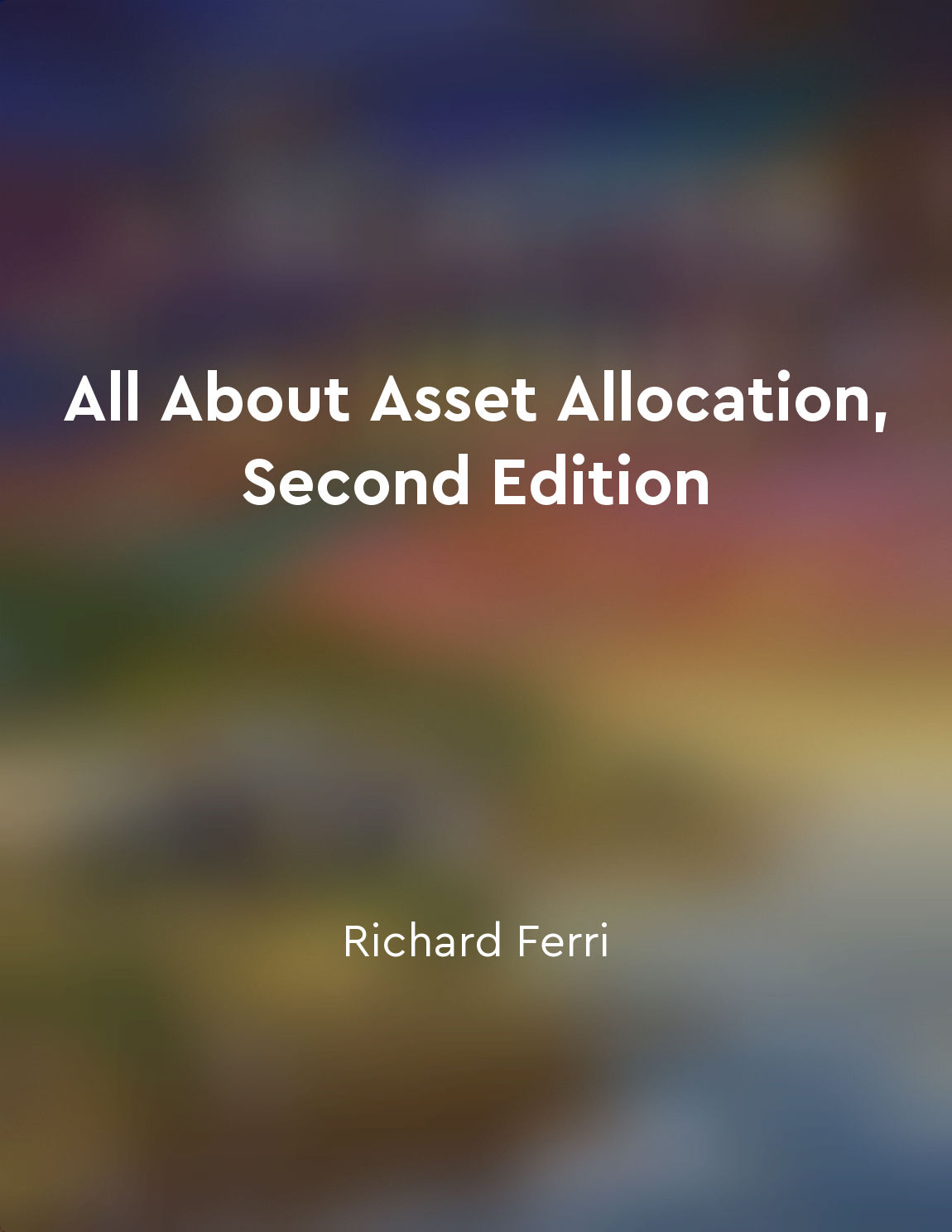Diversification across asset classes reduces risk from "summary" of All About Asset Allocation, Second Edition by Richard Ferri
When constructing a diversified portfolio, it is important to understand that different asset classes have different risk and return characteristics. By spreading investments across various asset classes such as stocks, bonds, real estate, and commodities, an investor can reduce the overall risk of their portfolio. This is because each asset class responds differently to market conditions and economic factors. Stocks, for example, tend to have higher volatility compared to bonds. During periods of economic growth, stocks may outperform bonds, but during downturns, stocks may experience significant losses. Bonds, on the other hand, are typically more stable and provide income through interest payments. By holding a mix of both stocks and bonds, an investor can mitigate the risk associated with any one asset class. Furthermore, adding alternative asset classes like real estate and commodities to a portfolio can provide additional diversification benefits. Real estate investments, such as REITs, can offer a hedge against inflation and generate rental income. Commodities, like gold and oil, have historically had low correlation to stocks and bonds, making them attractive diversifiers. By combining assets that have low correlation to each other, an investor can create a more balanced portfolio that is less susceptible to severe losses during market downturns. This approach, known as asset allocation, aims to maximize returns for a given level of risk. It is important to note that diversification does not eliminate risk entirely, but it can help manage and reduce overall portfolio risk over the long term. In summary, diversification across asset classes is a fundamental principle of investing that aims to reduce risk by spreading investments across different types of assets. By holding a mix of stocks, bonds, real estate, and commodities, investors can build a more resilient portfolio that can weather various market conditions. This approach not only helps to protect against significant losses but also allows investors to capture the returns of different asset classes over time.Similar Posts
Focus on the longterm growth of your investments rather than short-term market fluctuations
As you navigate the unpredictable waters of the financial markets, it is essential to keep your eyes firmly fixed on the distan...

Keep emotions in check while investing
When it comes to investing, emotions can be your worst enemy. It is important to keep your emotions in check while making inves...
Stay informed about market trends
Staying informed about market trends is crucial for investors. Knowing what is happening in the market can help you make better...
Cultivate thrift and budget wisely
To cultivate thrift means to develop the habit of saving money and spending wisely. This involves being mindful of our expenses...
Be patient for compounding to work
To truly understand the power of compounding in mutual funds, one must be patient and allow time for it to work its magic. Comp...
Knowledge and experience are valuable assets in trading
The knowledge and experience that a trader acquires over time are like valuable assets that cannot be easily replaced. These as...

Market fluctuations are normal
Market fluctuations are normal occurrences in the stock market. They are an inherent part of investing and should be expected b...

Seeking professional financial advice can provide clarity and guidance
When it comes to managing your finances and making important decisions about money, seeking professional advice can be crucial....
Be disciplined in your financial habits to achieve your goals
Achieving your financial goals requires discipline in your habits. It’s not enough to simply set goals and hope for the best. Y...
Stay patient during market downturns
The market has a knack for surprising even the most seasoned investors. It can soar to great heights one moment, only to plumme...

